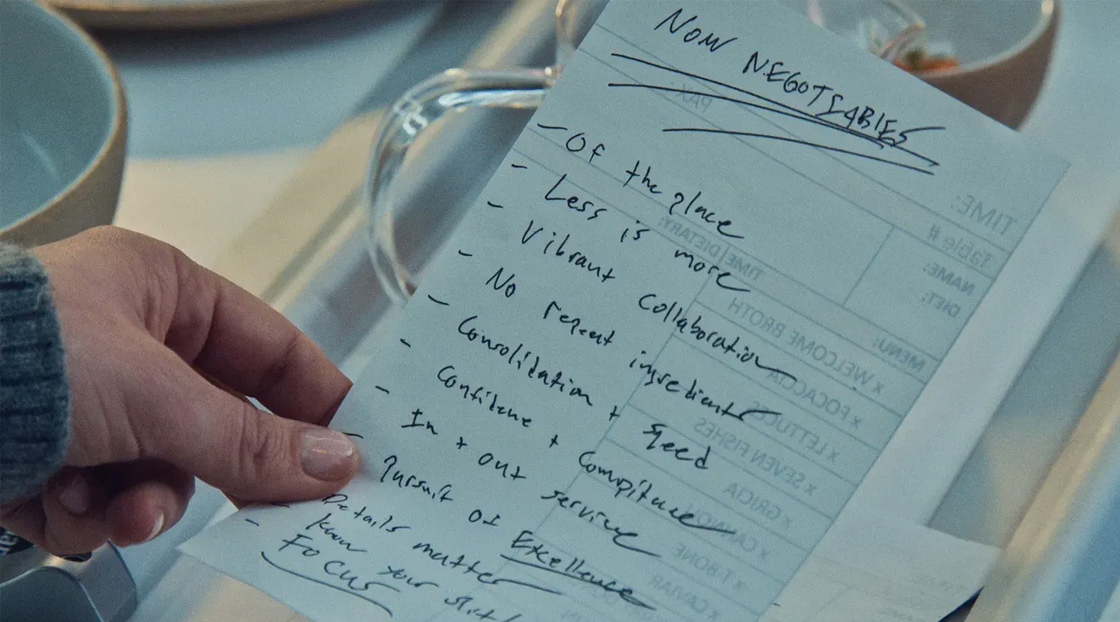The Bear is about a lot of things: the choreographed elegance of teamwork and the crippling consequence of poor leadership; the uplifting potential of upskilling in the workforce and the gravitational pull of both past and future. It’s also about legacy and the part each character has to play in re-envisioning an institution that has become inert.
But really, The Bear is about a rebrand. Reconciling the demands of executing a new vision for an entrenched brand in a way that builds a new legacy is the top challenge of any brand development initiative.
In season three, when Carmy scribbles his list of “non-negotiables,” it’s easy to dismiss it as a malignant artifact of his troubled past. But look closer. Those first 11 items (consolidated down to eight here) have immediate applicability to a higher education branding project — be it a refresh, rebrand, or otherwise — and the part your team can play in ensuring its success.
So, if you’re considering a branding initiative — in-house or with a strategic partner — read on.




